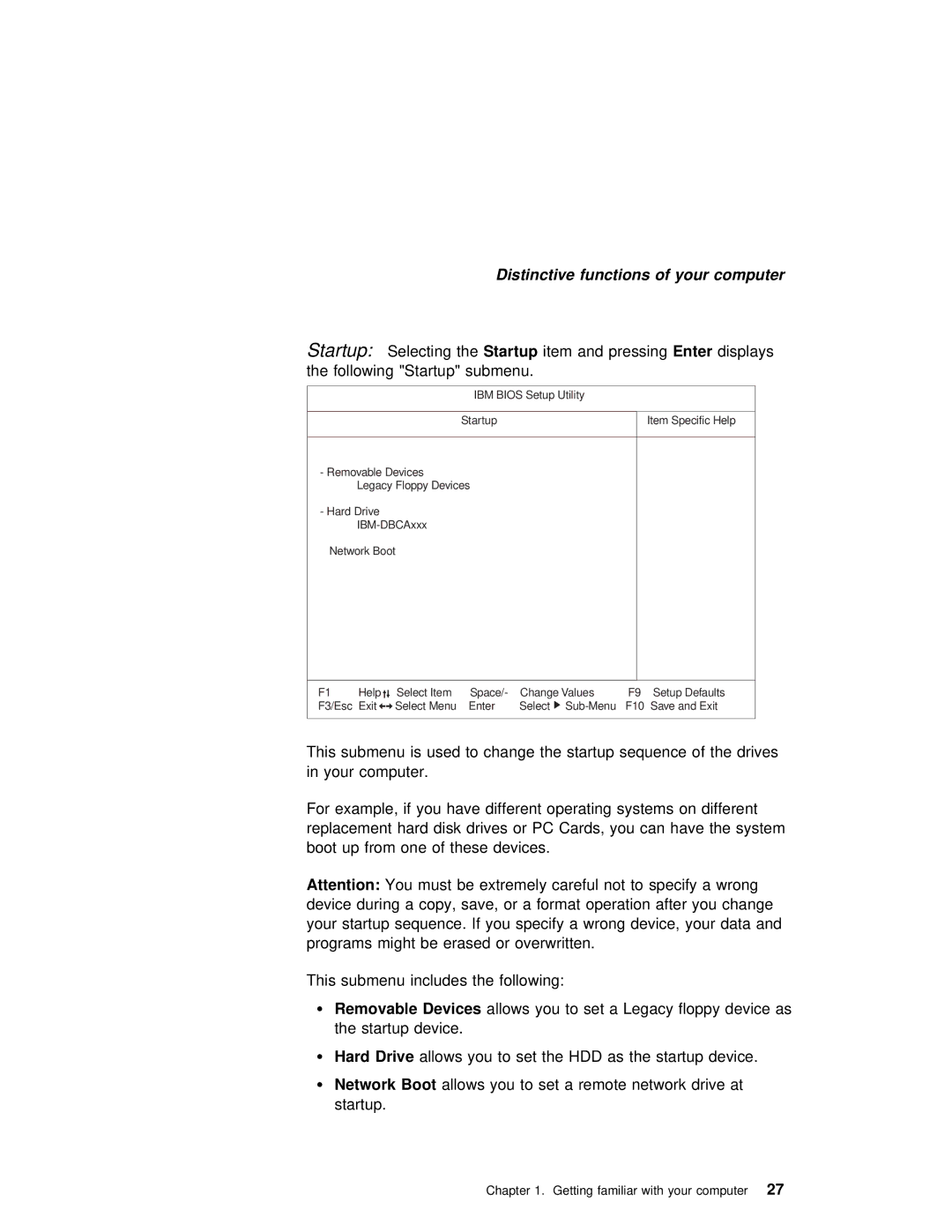
Distinctive functions of your computer
Startup: Selecting theStartup | item and pressingEnter | displays | ||
the following "Startup" | submenu. |
|
| |
|
|
|
| |
IBM BIOS Setup Utility |
|
| ||
|
|
|
| |
Startup |
| Item Specific Help | ||
|
|
|
|
|
- Removable Devices |
|
|
|
|
Legacy Floppy Devices |
|
|
|
|
- Hard Drive |
|
|
|
|
|
|
|
| |
Network Boot |
|
|
|
|
|
|
|
|
|
F1 | Help | Select Item | Space/- | Change Values | F9 Setup Defaults |
F3/Esc | Exit | Select Menu | Enter | Select | F10 Save and Exit |
This submenu is used to change the startup sequence of the dri in your computer.
For example, if you have different operating systems on differen replacement hard disk drives or PC Cards, you can have the syste boot up from one of these devices.
Attention: You must be extremely careful not to specify a wrong device during a copy, save, or a format operation after you ch your startup sequence. If you specify a wrong device, your d programs might be erased or overwritten.
This submenu includes the following:
Ÿ Removable | Devices | allows you to set a Legacy floppy device as |
the | startup | device. |
Ÿ Hard Drive allows you to set the HDD as the startup device.
ŸNetwork Boot allows you to set a remote network drive at startup.
Chapter 1. Getting familiar with your27 computer
